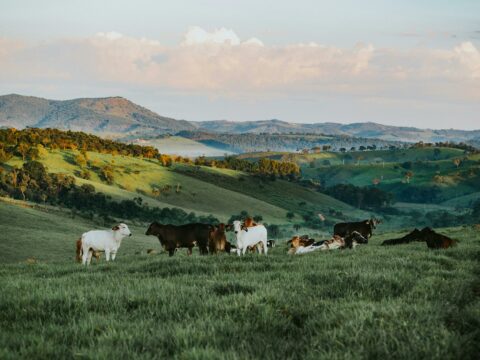I Care by BearingPoint recently aligned its various biodiversity footprint approaches at different scales (site, product, company) to provide its clients with a single multi-scale method: Biodiversity Footprint Suite (BFSuite).
Why update our biodiversity footprint methods?
Since 2017, I Care by BearingPoint has been developing biodiversity footprint methods at different scales for companies, in collaboration with several clients in different sectors (notably L’Oréal and EDF). I Care by BearingPoint also collaborates on the method developed by Iceberg Data Lab (Corporate Biodiversity Footprint), which is intended for financial actors.
Biodiversity Footprint Suite was born out of a desire to ensure consistency between the approaches proposed at different scales and thus be able to aggregate or disaggregate signals as needed. In addition, further development work is underway to continue improving the method. The BFAT (Biodiversity Footprinting for Agricultural Transition) project, conducted jointly with CDC Biodiversité, aims to improve the characterization of the beneficial effects of agroecological practices in quantifying the impacts of agriculture on biodiversity. The ocean project (Platform for Ocean Footprinting), currently being set up, aims to extend quantitative methods for measuring biodiversity impacts to the marine environment.
Why measure a biodiversity footprint?
It is a fact: biodiversity is in danger, and this has repercussions on the economy. Just as a navigator needs a map to set his course, companies, financial actors, states, and local authorities need to understand and document their respective contributions to this erosion of life in order to take action where necessary. The environmental impact of human activities (products, services, and organizations) can be assessed using Life Cycle Assessment (LCA): this involves analyzing the environmental impact of a product or activity throughout its entire life cycle using several indicators. However, these imperfect methods overlook several issues specific to biodiversity (quality of exploited soils, effects of pollution on species, etc.).
Several initiatives offer organizations approaches to understanding their impact on nature, whether regulatory (such as the CSRD and ESRS4 in particular) or voluntary (SBTN or TNFD). These approaches encourage organizations to identify their contribution to the various pressures on nature. Calculating a biodiversity footprint provides a quantitative response to this incentive by objectively identifying the main pressures and “hotspots” among the stages of the life cycle of the system under study, thereby prioritizing impacts and, ultimately, identifying the actions to be implemented as a priority.
Specific features of the BFSuite method
The BFSuite method was developed by I Care by BearingPoint, with the support of its partners, combining the strengths of LCA methods and models such as GLOBIO. BFSuite covers most of the biodiversity pressures identified by IPBES, namely: (a) climate change, (b) water stress, (c) pollution, covering terrestrial and freshwater acidification, freshwater ecotoxicity, and freshwater eutrophication, and (d) land use and land-use change, with land occupation and transformation.
Biodiversity losses are assessed in MSA (Mean Species Abundance): this is one of the metrics used to characterize the condition/integrity of ecosystems. An impact of -1 km².MSA.year corresponds to the loss of 1 MSA (totally degraded state) over 1 km² for 1 year. This is equivalent to the loss of 0.1 MSA over 1 km² for 10 years, or 0.1 MSA over 10 km² for 1 year.
A biodiversity footprint calculation with BFSuite involves several steps: (1) collect data on production, raw materials, etc. according to the scope of the calculation, (2) estimate environmental pressures, or midpoints, using complementary databases (or directly reported data), and (3) calculate biodiversity impacts using the developed characterization factors, in km².MSA.yr.
Pressure-impact relationships, or characterization factors, are based on IPBES analyses, GLOBIO pressure-impact relationships for land use, and various additional sources by pressure: IPCC model for climate change; AWARE model for water stress; Impact World+ model for pollution. A scientific article is currently being submitted for publication in a journal. The method has also been presented on several occasions at scientific conferences (SETAC 2025 & LCM 2025).
For example, work carried out with BFSuite has determined that the production of one GWh of electricity has a biodiversity footprint around 20 times lower when it comes from nuclear power than when it comes from a coal-fired power plant, mainly due to the significant contribution of climate change pressure during coal combustion.
Whatever your needs, our team provides an innovative methodology for creating biodiversity footprints tailored to the challenges faced by each organization. Please don’t hesitate to contact us for more information.
Sources :
¹ Biodiversity – Iceberg Data Lab
² Insight | BFAT: a method ready for deployment and promising initial results
³ IPBES, Global Assessment Report on Biodiversity and Ecosystem Services of the Intergovernmental Science-Policy Platform on Biodiversity and Ecosystem Services (Zenodo, 2019), https://doi.org/10.5281/zenodo.6417333.
⁵ ALIGN, Recommendations for a Standard on Corporate Biodiversity Measurement and Valuation (European Commission, 2022), https://ec.europa.eu/environment/biodiversity/business/assets/pdf/2022/Align_Report_301122.pdf.
⁶ Global Assessment Report on Biodiversity and Ecosystem Services, IPBES, 2019
⁷ Katherine Calvin et al., IPCC, 2023: Climate Change 2023: Synthesis Report. Contribution of Working Groups I, II and III to the Sixth Assessment Report of the Intergovernmental Panel on Climate Change [Core Writing Team, H. Lee and J. Romero (Eds.)]. IPCC, Geneva, Switzerland., First, avec Hoesung Lee (Intergovernmental Panel on Climate Change (IPCC), 2023), https://doi.org/10.59327/IPCC/AR6-9789291691647.
⁸ Anne-Marie Boulay et al., « The WULCA Consensus Characterization Model for Water Scarcity Footprints: Assessing Impacts of Water Consumption Based on Available Water Remaining (AWARE) », The International Journal of Life Cycle Assessment 23, no 2 (2018): 368‑78, https://doi.org/10.1007/s11367-017-1333-8.
⁹ Cécile Bulle et al., « IMPACT World+: A Globally Regionalized Life Cycle Impact Assessment Method », The International Journal of Life Cycle Assessment 24, no 9 (2019): 1653‑74, https://doi.org/10.1007/s11367-019-01583-0.







